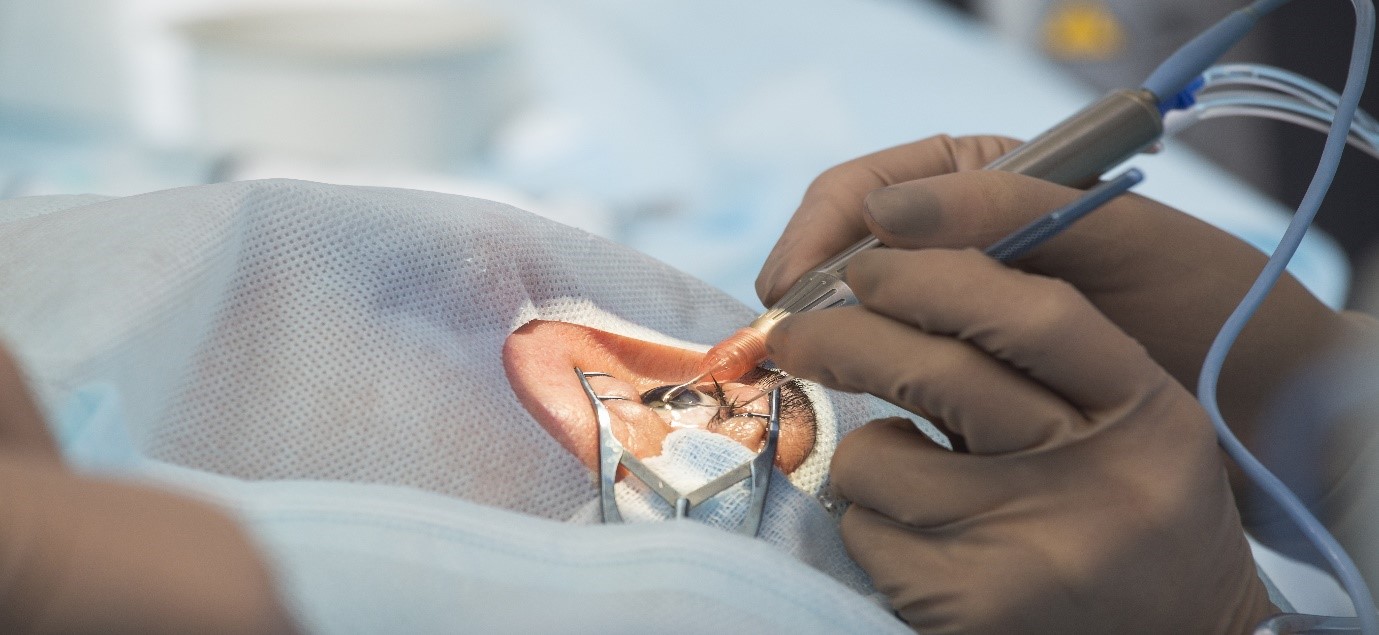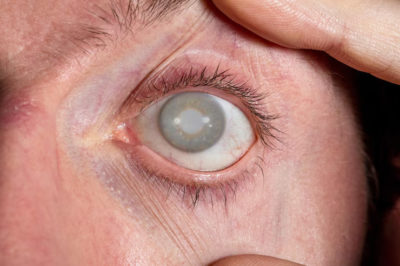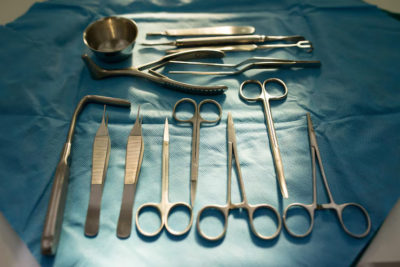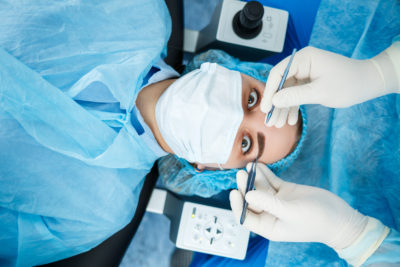About a year ago, Meeta, a 58-year-old homemaker, visited our hospital for her annual eye checkup. Even though she had had strong eyesight since she was a child, she had been complaining about blurred vision, yellowing of colours, and sensitivity to light for the last couple of months.
Meeta has been one of our most loyal patients, and we know all about her medical history. After a brief discussion about her symptoms, we could make out that she was suffering from a cataract; however, we decided to run a few tests to come up with a formal diagnosis. While we were preparing our diagnostic setup, out of her usual curiosity, she asked us whether cataract was a treatable disease.

As a hospital that takes pride in having treated over 20 lakh cataract patients, we smilingly answered in the affirmative. In layperson terms, we explained that a cataract is a cloudy area that forms on the lens of an eye.
Initially, a cataract begins when protein clumps form in the eye, preventing the lens from sending out clear images to the retina. The retina works by seamlessly converting the light into signals while sending indicators to the optic nerve responsible for carrying them to the brain. In order to be sure in Meeta’s case, we ran a few tests mentioned below:
- Retinal exam
- Visual acuity test
- Slit-lamp examination
- Applanation tonometry
Once all the results pointed towards the formation of a cataract, we suggested Meeta a laser cataract surgery. From experience, we know that people are hesitant the minute they hear the word ‘surgery’. Thus, once Meeta was clear on the fundamentals of cataract and laser cataract surgery, we gave her a step-by-step insight into the usually followed process for this surgery.
In simple terms, laser cataract surgery can be divided into two broad categories: femtosecond laser cataract surgery and Femto laser cataract surgery. To put it in a simplified way, an outpatient surgical process in which the cloudy lens or the cataract is replaced with a clear, artificial lens is called laser cataract surgery. Below we have mentioned 4 broad steps of this procedure: incision, phacoemulsification, capsulotomy, and replacement.
- Incision: To carry out the first step of laser cataract surgery, a femtosecond laser is employed to make an incision in the eye with the help of OCT or Optical Coherence Tomography which produces a high-resolution and magnified image of the patient’s eye.
- Phacoemulsification: In the next step, ultrasound vibration is delivered at high speed in order to dissolve the cataract into multiple tiny fragments that are carefully suctioned out of the eye to avoid any internal damage or injury.
- Capsulotomy: The stage where the lens is gently removed is called a capsulotomy. As the capsule of the eye is responsible for holding the lens, it has to be kept in place to firmly hold the new lens that will be inserted.
- Replacement: In this last step of laser cataract surgery, a new lens is carefully inserted into the existing capsule.
Advantages of Opting Laser Cataract Surgery
As mentioned above, there are two primary types of laser cataract surgery: Femto laser cataract surgery and femtosecond laser cataract surgery. For someone who carries minimal knowledge about the medical, more precisely, ophthalmological field, it can be difficult to grasp the difference between both.
Therefore, we have mentioned of definitions and benefits of both the type of surgeries below:
Femto laser Cataract Surgery
Femto laser cataract surgery is presently the most upgraded and advanced way to easily remove a cataract. This procedure replaces several steps of cataract surgery, i.e., using a blade to soften the cataract, ensuring a smoother and easier removal. It offers a range of benefits like:
- Ensures gentler breakdown of the lens
- Astigmatism correction
- Safer capsulotomy
- Precise incisions
Femto Second Laser Cataract Surgery
Even though this type of surgery is in its infancy stage, it is gaining popularity due to accelerated predictability and improved consistency for anterior capsulorhexis and corneal incisions.
This type of surgery deploys a special type of laser called femtosecond laser that is exclusively designed to make precise incisions in the right place within the lens and cornea. Here are the benefits of femtosecond laser cataract surgery:
- Needle and blade-free
- Offers heightened safety levels
- Offers accelerated efficiency and effectivity
- Optimised comprehensible and visual results for patients
On the day of the surgery, we made Meeta comfortable and assured her that the procedure was safe and effective so she could lay down and relax. Next, after quickly noting down her her pulse, temperature, oxygen saturation, and respiratory rate, we gave her the anaesthetic medication and then injected her eye with anaesthesia, so we could begin with the surgery.
The whole process took about 20-30 minutes, and once we were confident that she didn’t experience any bleeding, pain, or swelling, she was allowed to go home within a couple of hours. However, during her recovery period, we gave her the following instructions to keep in mind:
- Even though the recovery period after a laser cataract surgery can span several weeks, she will be able to see clearly within a few days.
- In order to optimally shield her eyes, we suggested she wears sunglasses under sunlight and bright indoor eyes.
- Try to avoid putting water or any other kind of chemical into her eyes.
- Book an eye appointment after a week to get her healing status checked.
When she visited us for a checkup, she was ecstatic to be able to see clearly without the assistance of spectacles. After a brief conversation, we shared a laugh about how tensed she was before the surgery, while now, she is grateful she underwent it. Before turning around, she thanked us and walked toward a more convenient and comfortable lifestyle.
Get Advanced Eye Treatments with Dr. Agarwals Eye Hospital
At Dr Agarwal’s Eye Hospital, we offer a wide range of treatments like PDEK, oculoplasty, glued IOL, laser cataract surgery, and more. We have 100+ hospitals across 11 countries with state-of-the-art infrastructure that ensure optimum comfort and satisfaction for our patients.
In addition, with a skilled team of 400 doctors, we are known to offer personalised care, unmatched hospital experience, and a world-class technical team that has been revolutionising healthcare since 1957. Book an appointment today for quick and stress-free eye surgery, giving you optimum comfort and crystal-clear vision.
Explore our website today to know more about our medical facilities and services!










